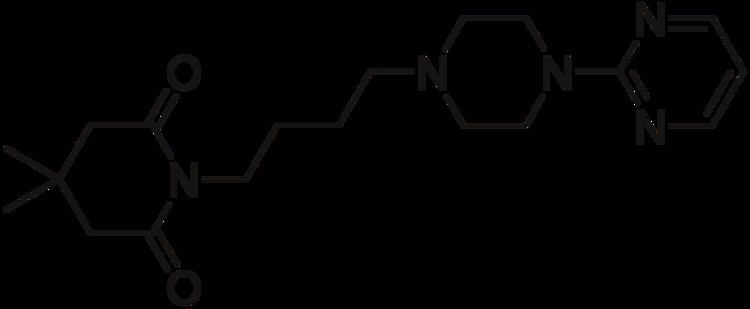Routes of
administration Oral Biological half-life 2–3 hours (IR) PubChem CID 55191 | ATC code N06AX19 (WHO) CAS Number 83928-76-1 Molar mass 359.4659 g/mol | |
 | ||
Synonyms BMY-13805, MJ-13805, ORG-13011; Ariza, Variza, Velexity | ||
Gepirone (INN) (current developmental code name TGFK07AD; proposed brand name Travivo) or gepirone hydrochloride (USAN) is an antidepressant and anxiolytic drug of the azapirone group that was synthesized by Bristol-Myers Squibb in 1986 and has been under development for the treatment of depression but has yet to be marketed. Like other azapirones, it acts as a selective partial agonist of the 5-HT1A receptor. Gepirone has been under development in the U.S. in an extended release form (referred to as gepirone ER), but despite completing phase III clinical trials and demonstrating efficacy, it has been rejected multiple times by the FDA during the drug approval process.
Gepirone was originally developed by Bristol-Myers Squibb, but was out-licensed to Fabre-Kramer in 1993. The U.S. Food and Drug Administration (FDA) rejected approval for gepirone in 2004. It was submitted for the preregistration (NDA) phase again in May 2007 after adding additional information from clinical trials as the FDA required in 2004. However, in 2007 it once again failed to convince the FDA of its qualities for treating anxiety and depression. In December 2015, the FDA once again gave gepirone a negative review for depression due to concerns of efficacy.[1] However, in March 2016, the FDA reversed its decision and gave gepirone ER a positive review, clearing the way for the drug to finally gain market approval in the U.S.[2]
In addition to its antidepressant and anxiolytic properties, gepirone has been found to improve symptoms of sexual dysfunction in men and women, similarly to the marketed 5-HT1A receptor agonist flibanserin. Moreover, the pro-sexual effects appear to be independent of its antidepressant and anxiolytic effects.
Unlike its relative buspirone, gepirone has negligible affinity for the D2 receptor (30- to 50-fold lower in comparison), and its efficacy in activating the 5-HT1A is greater than that of buspirone. However, similarly to buspirone, gepirone metabolizes into 1-(2-pyrimidinyl)piperazine, which is known to act as an antagonist of the α2-adrenergic receptor.
